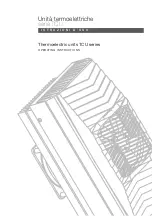
15
14
7.0 Specifications
The Gridmesh Anchor has been tested to ensure it is capable to performing to the rated load requirements.
Standards:
The Gridmesh Anchor has been tested to verify its strength requirements as a
mobile crane device to AS1418. The sling is separately tested and certified to AS1666.
Testing information can be found on the Gridmesh Anchor website. A certificate of proof load
testing is provided with each sling device.
Materials:
Base and lid - Polyethylene, Anchor beam - mild galvanised steel, Sling - 10mm
galvanised steel cable with copper swages, tag line - polyester rope and metal connectors and
polyester webbing, bag - convas.
Performance:
i
Anchor capacity
1.2 tonne WLL
GMA Anchor weight
21kg
200mm
14
0m
m
8.0 Marking
The following labels are located on the inside lid and must be present and fully legible to maintain product
conformance.
5.0 Inspection
Inspection Frequency:
The Gridmesh Anchor should be periodically inspected as follows.
Before each use:
An inspection of the Gridmesh Anchor by a competent person must be
completed after the anchor is installed and prior to each use of the anchor. Inspect per procedures
defined in 5.4.
Annual Inspection:
the Gridmesh Anchor must be formally inspected by qualified equipment
Inspector, other than the user, at least annually. Extreme working conditions may require
increasing inspection frequency. Inspect per the procedures below and record the inspection
results in the Inspection and Maintenance log at the back end of this manual or in a suitable
inspection tracking system maintained by your business.
Inspection Steps:
1.
Inspect the Gridmesh Anchor components for damage or corrosion. Inspect for cracks or
wear that may affect strength and operation/function.
2.
Inspect the base and lid portions of the Gridmesh Anchor, ensuring there are no breaks/cut,
wear or damage and that labels are present. Reflective tape can be replaced if missing.
3.
Inspect the Gridmesh Anchor beam surface finish for corrosion and impact damage,
ensuring the end caps are not loose and the labels are legible and present.
4.
Inspect the wire sling(s) for damage including broken strands, fractured swages, wear or
corrosion. Remove from service in the event of any damage noted and seek a suitable
replacement from the manufacturer. Be sure to place a new inspection tag at the completion
of the inspection.
5.
Record the inspection results in the in the Inspection and Maintenance log at the back of the
manual, or in an alternative location system log.
IMPORTANT - Unsafe or Defective conditions:
If inspection reveals an unsafe or
defective condition, remove the Gridmesh Anchor from service, mark “UNUSABLE” and dispose
of in the recommended manner (see “Section 5 - Disposal”), or contact Gridmesh Anchor for
possible repair/replacmetn of specific items.
Product Life:
The functional life of the Gridmesh Anchor is determined by work conditions
and maintenance. As long as the Gridmesh Anchor passes inspection criteria, it may remain
in service.
Disposal:
Dispose of the Gridmesh Anchor if it has been damaged or subjected to load forces
or inspection reveals an unsafe or defective condition.
6.0 Maintenance, servicing, and storage
Gridmesh Anchor maintenance:
The components require no scheduled maintenance
other than repair or replacement if any are found defective during routine inspection. If
component become heavily soiled with grease, paint or other substances, clean with
appropriate cleaning solutions. Do not use caustic chemicals that could damage system
components. Store in a clean, dry environment when not in use.


































